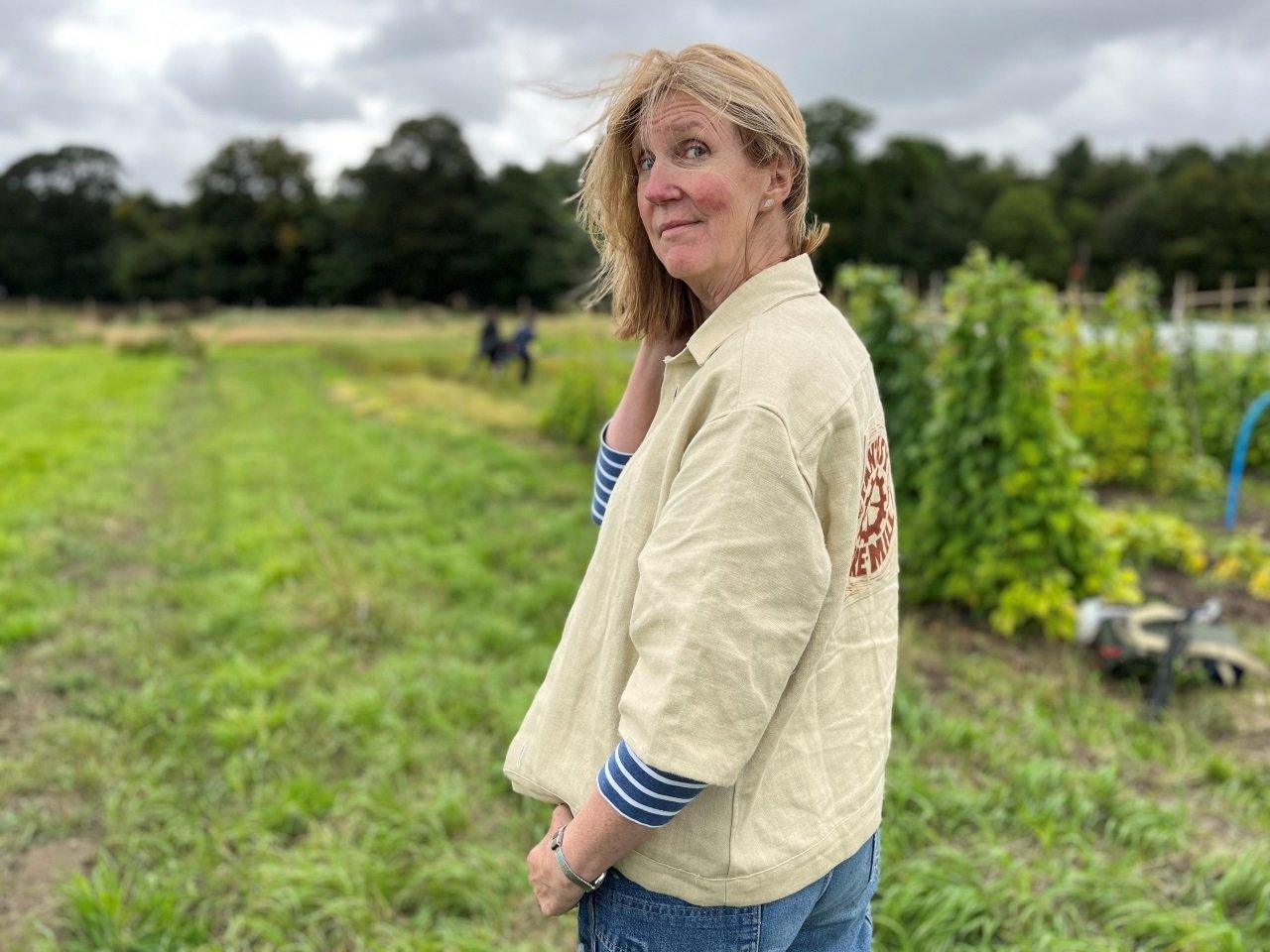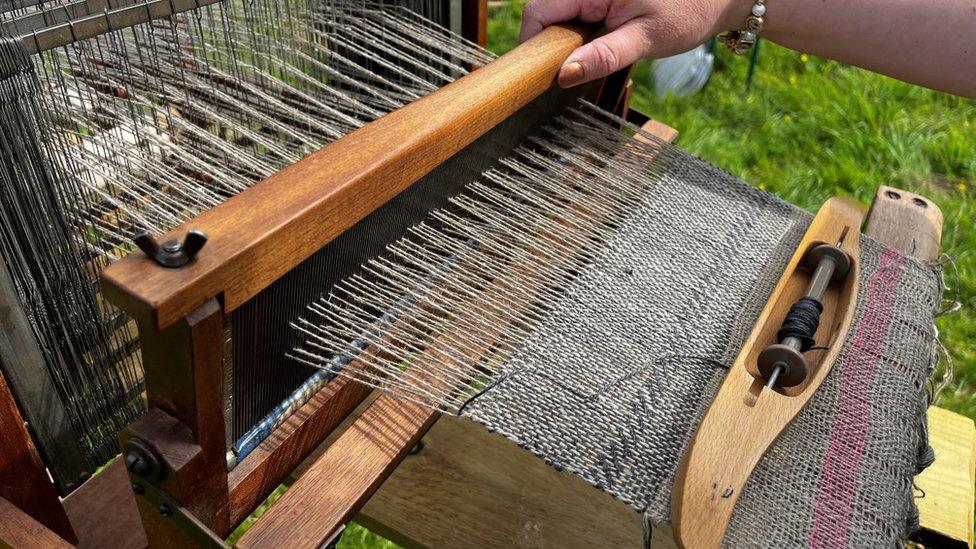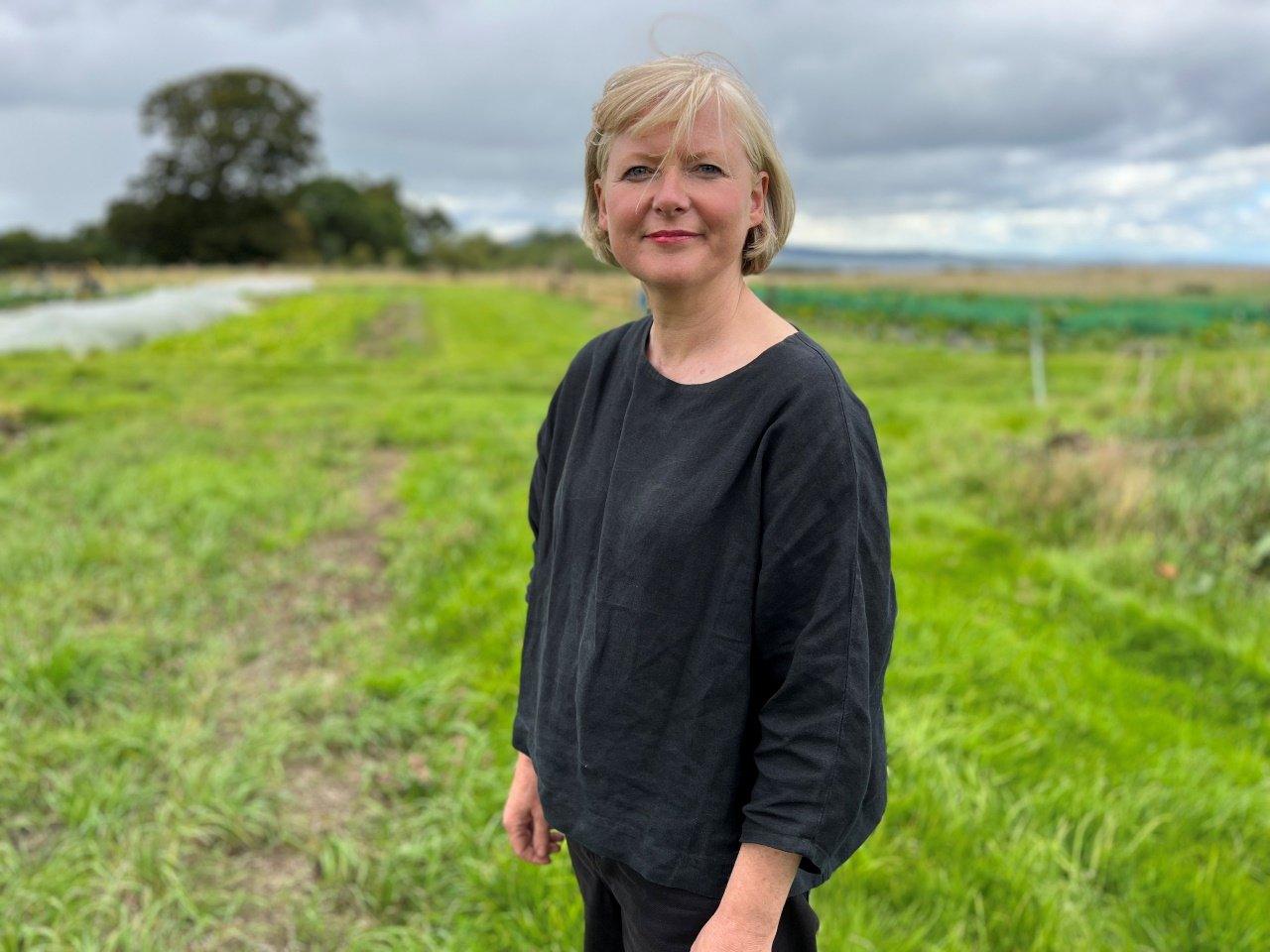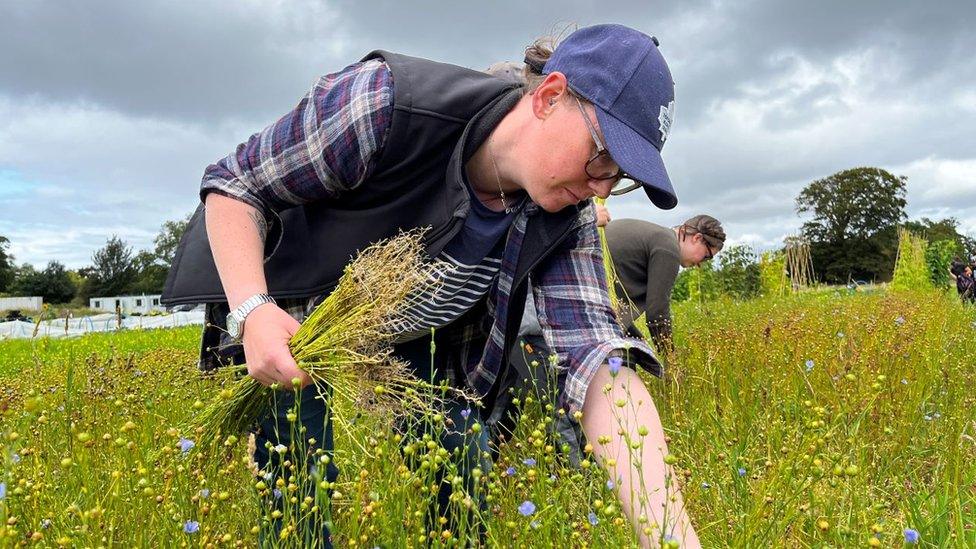Flax: Bringing back the historic crop which could make fashion greener
- Published
Designer Rosie has developed some of the equipment used in the trials
A crop which was once a staple of Scottish farming is being revived as the fashion industry looks for ways to cut its carbon footprint.
Flax was widely grown 100 years ago to make linen for garments and for ships' sails.
But its decline was triggered by a move towards cheaper man-made fibres, which were often imported, and a shift away from sailing.
Now climate change is making linen an appealing option again as fashion houses increasingly demand natural, locally-grown fibres.
The Scottish varieties of fibre flax have been lost, but alternatives have continued to be grown in other parts of the world.

Grower Jossie Ellis has harvested a trial crop on farmland in Edinburgh
Now trials are taking place in Scotland to see how modern varieties of flax cope with today's climate.
Soil Association Scotland believes that increasing demand for linen means an entire supply chain could be developed within a decade.
The trials were conceived by teams at Edinburgh College of Art, where students have been looking for low-carbon alternative fabrics.
The fashion industry has been estimated to be responsible for up to 10% of the world's greenhouse gas emissions.
Although linen clothing can be more expensive to buy, it's a strong and hard-wearing fibre which means it should last much longer than cotton or polyester garments.

Julia Zeller-Jacques is wearing an open jacket made from flax
The flax has to go through several stages of processing before it turns into a hair-like fibre which can be spun into thread, then woven into linen.
Technologies are now being developed to speed up the manufacturing process.
The small-scale nature of the trial means the crop is currently being picked by hand.
Commercial growing on a large scale would require specialist machinery for both farming and manufacturing.
Designer Rosie Bristow has developed some of the equipment which has been used for the trials.

Linen can be painstakingly hand-weaved to create coarse cloth
She said: "Everybody's very aware that petroleum-based products, which can make up 70% of textiles, are really bad for the environment, so I think there's an increasing demand for natural fibres.
"Personally, when I've been talking to fashion designers, they are very excited by the idea of being able to have locally-grown textiles to use in their products."
Grower Jossie Ellis found flax to be a fast-growing and easy crop to manage, with impressive resilience.
"It took about 20 minutes to sow about 90 square metres of bed and then we have ignored it.
"It got sown during a drought. We didn't irrigate it, we didn't weed it.
"In terms of a crop that doesn't take any additional time, this is definitely in that category," she said.

Textiles Tutor Niki Taylor sports a linen top using dyed fibre
It takes around 100 days to grow flax from seed to harvest, which may make it attractive for Scotland's shorter growing season.
Colleen McCulloch, from Soil Association Scotland, explained: "It's got potential to slot in really nicely with existing crop rotations on mixed and arable systems.
"On the continent it's usually grown on a seven-year rotation, so that could be a benefit for some farms that are looking to diversify."
Around 70% of the world's flax fibre is now grown in the Netherlands and France.
Flax is still grown in the UK for seeds - but these are shorter varieties which do not have the long stems that can be turned into fibre.
Experts say it is known to thrive and grow tall in temperate climates and wet soil, which would make Scotland ideal.

Volunteers have been harvesting flax at Lauriston Farm in Edinburgh